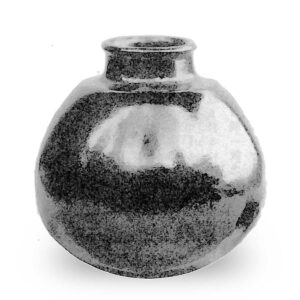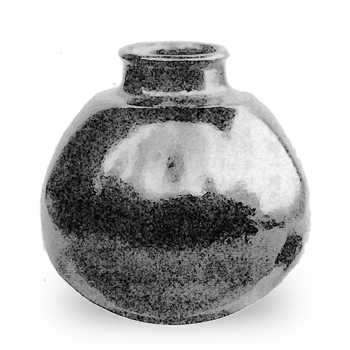
A great local specialty. Eggplant tea container made by Han. Tsukumo” also means “Ezawamo,” “Eura grass,” or “crop. Also known as “Matsunaga eggplant” and “99 hairs. According to the note by Tadataka Shokokuji, a monk of Shokokuji temple, in “Soumiki”, “When Lord Shikanen Sou (Ashikaga Yoshimitsu) went to the battlefield of Uchino, he tied this to the back of his golden armor and followed him. You should know that his love was respected. Recently, Lord Jisho (Ashikaga Yoshimasa) gave it to Yamana Reibu (Yamana Masatoyo).
This is because he was favored for his manly charms. The tenth generation of the Ashikaga Shoguns were all given to the Shoguns.
Since it is said that the Ashikaga Shogun’s ten generations inherited it, it was a rare object of the Ashikaga Shogun’s family from the time of his death to the death of Yoshinobu. The tea container, which was used during the wars at the end of the Muromachi period (1336-1573), was also handed down to other people, and Shuko bought it from an antique store for 99 kan (about $9.95). The name “Tsukumo-nasu” was derived from an ancient poem in “Ise-no-mikoto” (“The Tale of Ise”), “99 kan (99 kan) is compared to 99 hairs. Later, it was handed down to Munezo Miyoshi, and then to Tarozaemon Asakura in Echizen Province (Fukui Prefecture) to a certain Kosodenya in Doshoku, but in case of war, it was kept in a certain Fukuroya in Kyoto. In the spring of 1558, however, Hisahide Matsunaga used a trick to retrieve it and claim it as his own, and the “Sogyo Chayu Nikki” (Diary of Sogyo and Tea Ceremony) reveals that he was very pleased with it and often used it for tea ceremonies. Later, in November 1568, when Nobunaga Oda entered Kyoto and the whole country returned to Nobunaga, Hisahide had no choice but to present this treasured eggplant to Nobunaga to gain his favor. After Nobunaga’s death, it became the property of Toyotomi Hideyoshi and was stored in the treasury of Osaka Castle, but the treasury containing tea utensils was also burned down when the castle fell in 1615. Honda Masazumi then recommended to Tokugawa Ieyasu that he ordered the father and son of Fujishige Tougen and Dou Fujimoto to search for the famous tea masters among the burnt ruins. The eggplants were found badly damaged, but Fujishige and his son painstakingly repaired them with lacquer to restore them to their original form, and reworked the glaze to a color almost identical to that of the original. Ieyasu gave the tea caddy and the Matsumoto eggplant to the Fujishige father and son as a reward, and they remained a treasure of the Fujishige family until 1876 (9th year of Meiji), when the family sold them to Yanosuke Iwasaki, a newly rich man known at the time for his family’s financial difficulties, and they have remained in the family since. (The following items were handed down to the family: Tsuda Munenori Chayu Nikki, Tensho Meimono Ki, Chakki Meimono Shu, Yamakami Soji Ki, Higashiyama Gomotsu Nai Betsucho, Matsuya Nikki, Soumiki, Jyuhen Onniki, Taikouki, Choyakudoki, Chadenki Roku, Chaji Dan, Manpozensho, and Taisho Meikikan (Diary of a Tea Ceremony).



